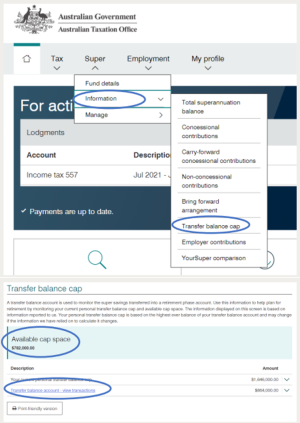Ask the Expert: Unravelling a tricky super switch, plus the conundrum of mortgage v HECS


Knowing the difference between managed funds and separately managed accounts may help your investment decisions. Photo: TND
Question 1
- I am 64, permanently retired and drawing a pension from our SMSF. I did not utilise the entire transfer balance cap ($1.6 million at the time) when commencing the pension. According to the ATO site, I currently have cap space of $100,200. My pension account is now over $1 million, and I have $600,000 in accumulation. I have read that commuting part or all of the pension back to accumulation, then recommencing a pension with extra funds added from accumulation is possible. And that this can effectively “claw back” some TBC if it was not fully utilised initially? I would like to use as much of the current $1.9 million pension cap as possible. Can you clarify commutation for me please?
The whole concept of the Transfer Balance Cap can be confusing and is technical. So bear with me.
When you started your pension the general Transfer Balance Cap (TBC) would have been $1.6 million. This is the amount you can start a pension with (or any retirement income stream).
Someone starting a pension today can use the general TBC of $1.9 million due to it being indexed over the past few years.
When someone starts a pension they then create a personal TBC.
This simply means you can use the general TBC that was applicable at the time you started a pension plus any proportional indexation since then.
Proportional indexation means if you used, say, 70 per cent of the general TBC, you can then only have 30 per cent of any future indexation. And if you used 100 per cent of the TBC you have zero per cent future indexation.
As you have already started a pension when the general TBC was at $1.6 million, you could never have a personal TBC of $1.9 million as you are only entitled to proportional indexation.
 Now I know this can all get very confusing so I’m glad you have referenced the ATO, as using MyGov keeps track of this for you and is the best place to refer to.
Now I know this can all get very confusing so I’m glad you have referenced the ATO, as using MyGov keeps track of this for you and is the best place to refer to.
Just ensure your SMSF has reported all transactions to the ATO in an accurate and timely fashion otherwise costly mistakes can happen.
Retail and industry funds have tight deadlines when they report transaction to the ATO.
MyGov will let you know the ‘available cap space’ you have with your personal TBC. See picture below.
As this can get complex, I suggest seeking personalised financial advice.
Question 2
- I get really confused with Defined benefit component and Accumulation component, I will be 56 this year and have started to really understand the terms and conditions of super. I am with Unisuper.
Most super funds these days are ‘accumulation’.
They are pretty simple to understand. Money goes in and it achieves a return, positive or negative, and you are left with the balance.
Defined benefit super funds on the other hand can be quite complex.
Their end benefit is ‘defined’ by a set formula.
The formula is made up of:
- Your salary
- Your regular contribution amounts
- How long you have been a member
- Your age.
It’s important you have a good understanding of your super so you can make the most of it.
UniSuper provides assistance and advice over their funds and I recommend you contact them to discuss.
Question 3
- My daughter, in her mid-twenties, bought a home last year (country town) has a fixed-rate mortgage (4.9 per cent) for another 14 months, HECS debt of $40k. My opinion is she should pay down the HECS (7 per cent) in preference to the mortgage with her excess dollars. But I would very much appreciate your decision/advice.
Generally, in most years, home mortgage rates are higher than the indexation that applies to a HECS debt. With the surge in inflation last financial year the opposite was true.
However, over the long term I would still expect mortgage rates to be on average higher than HECS indexation.
There are also another couple of issues to consider:
- Home loans can often have a redraw or offset facility that can be utilised. This can be a handy place to make additional contributions where you can still access the funds down the track if required. HECS have no comparable feature
- With HECS, if your income drops, your mandatory level of repayments go down (or stop). This can reduce some financial pressures in difficult times. With a home loan you have to keep making payments regardless of your personal situation.
Given all of the above I still favour making additional home loan repayments over HECS.
Craig Sankey is a licensed financial adviser and head of Technical Services & Advice Enablement at Industry Fund Services
Disclaimer: The responses provided are general in nature, and while they are prompted by the questions asked, they have been prepared without taking into consideration all your objectives, financial situation or needs.
Before relying on any of the information, please ensure that you consider the appropriateness of the information for your objectives, financial situation or needs. To the extent that it is permitted by law, no responsibility for errors or omissions is accepted by IFS and its representatives.
The New Daily is owned by Industry Super Holdings







